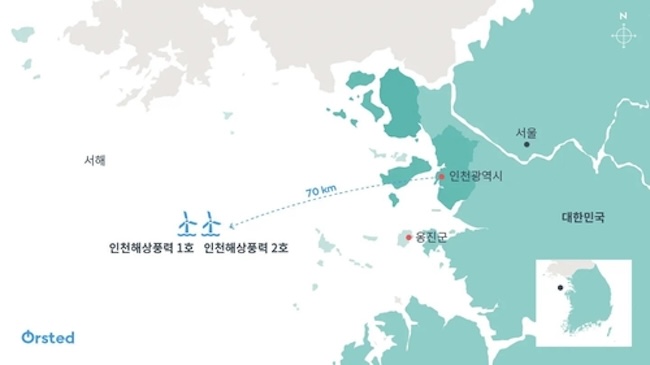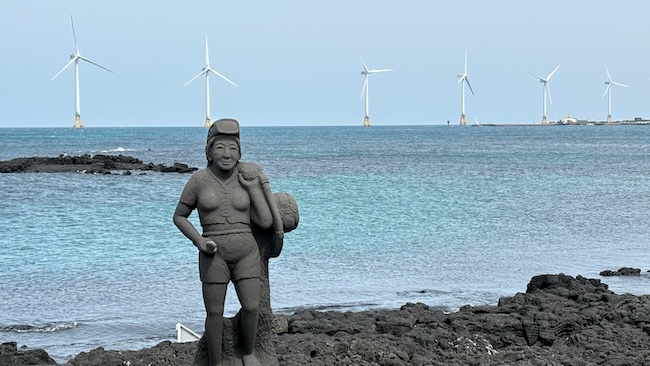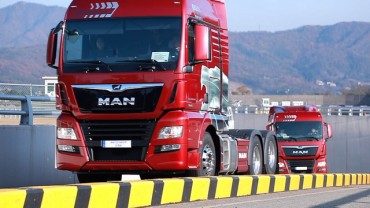SEJONG, Apr. 1 (Korea Bizwire) – As South Korea ramps up construction of large-scale offshore wind farms, the nation is poised to witness exponential growth in this renewable energy market, with investments projected to reach a staggering 100 trillion won by the end of this decade.
Amid the global push for decarbonization, the South Korean government has recognized the pressing need to steadily increase reliance on renewable power sources, aiming to alleviate the country’s heavy dependence on solar energy by shifting its policy focus to “orderly large-scale development” of offshore wind, thereby achieving a more balanced energy mix within the renewable sector.
According to the Ministry of Trade, Industry and Energy, the government’s 10th Basic Plan for Electricity Supply and Demand targets the deployment of 14.3 gigawatts (GW) of offshore wind capacity nationwide by 2030.
Currently, South Korea has only three operational commercial offshore wind farms with a combined installed capacity of merely 124.5 MW (0.1245 GW), underscoring the nascent state of the domestic offshore wind industry.
Consequently, achieving the ambitious 14 GW-plus target within the remaining seven years poses a formidable challenge. For context, 1 GW is equivalent to the capacity of a typical nuclear power reactor.
Constructing a 1 GW offshore wind farm dozens of kilometers out at sea requires installing approximately 200 individual 5-megawatt turbines in the ocean.

Danish firm Ørsted obtained rights to develop South Korea’s largest offshore wind project yet – a 1.6 GW facility located 70 kilometers off the coast of Incheon. (Image courtesy of Ørsted)
Industry insiders estimate that while offshore wind farm construction previously cost around 5 trillion won per GW, recent spikes in global commodity prices and persistent high interest rates have driven up those costs to nearly 7 trillion won per GW.
Assuming a 7 trillion won price tag per GW, the private sector would need to invest up to 100 trillion won to reach South Korea’s 2030 offshore wind target of 14.3 GW.
Numerous domestic and international companies and institutions have already secured generation permits from the energy ministry and are competitively advancing their offshore wind projects.
To date, permits have been granted for 83 offshore wind farms with a combined planned capacity exceeding 27 GW. Some of these individual projects are truly gargantuan, with total costs running into the trillions of won.
Last November, Danish firm Ørsted obtained rights to develop South Korea’s largest offshore wind project yet – a 1.6 GW facility located 70 kilometers off the coast of Incheon.
Ørsted plans to invest 8 trillion won to construct the wind farm, which could supply carbon-free electricity to 1 million households in the Seoul metropolitan area upon completion as early as 2030, pending remaining permits and environmental assessments.
The 10th Basic Plan calls for expanding total renewable capacity by approximately 40 GW by 2030, with offshore wind accounting for around one-third of this increase – helping to rebalance the nation’s skewed 87:13 ratio between solar and wind power generation as of 2021. Authorities aim to achieve a more balanced 60:40 solar-to-wind mix by the end of the decade.
While both solar and wind are intermittent power sources subject to natural variability, wind farms can generate electricity around the clock, unlike solar which is limited to daylight hours. This attribute allows wind to ease the operational strain on the grid caused by uneven power surges.
“Unlike solar, which faces challenges in scaling up and has sparked concerns over encroaching on agricultural land and forests, offshore wind power holds immense potential for large-scale development in our country,” said Yoo Seung-hoon, dean of Seoul National University of Science and Technology’s College of Creativity and Convergence Studies.
Kevin Lee (kevinlee@koreabizwire.com)







